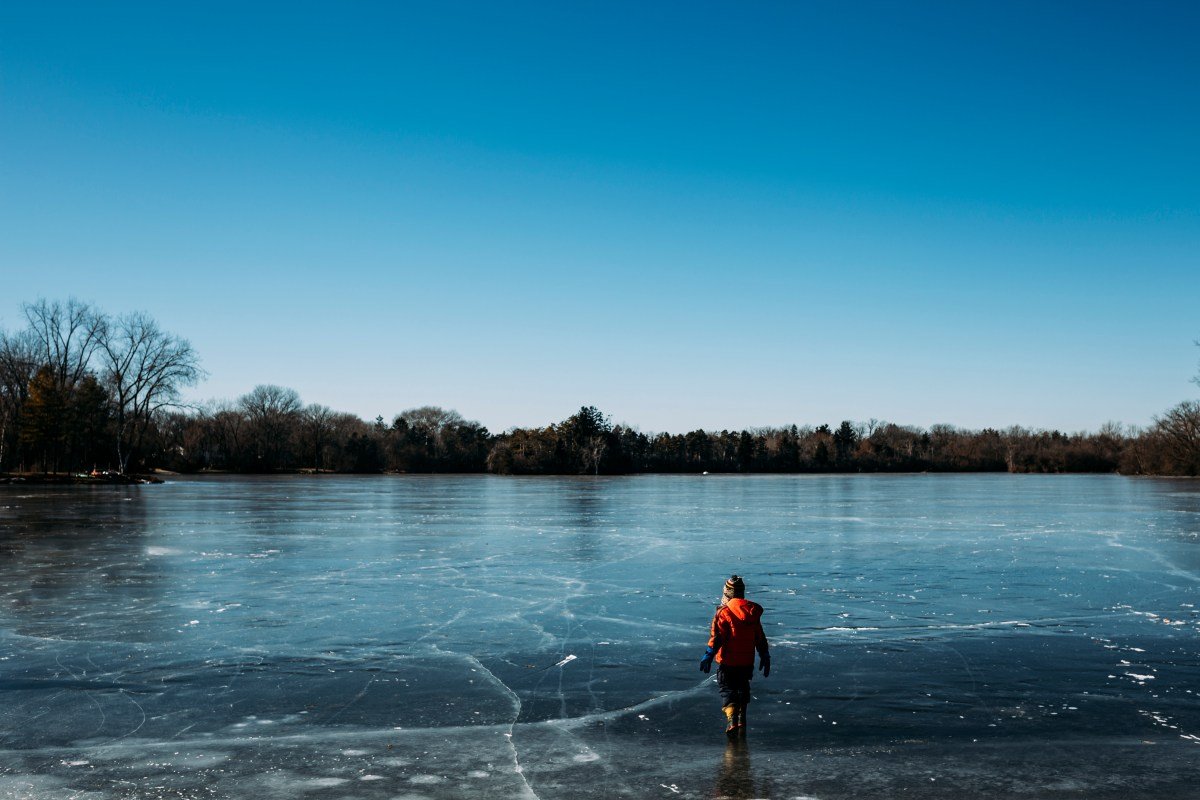How Can You Test for Safe Ice for Crossing During Winter Hiking?

If you love hiking, you shouldn’t let the cold weather months slow you down. There are a lot of benefits of a winter hike, from a newfound solitude to enjoying some of your favorite landscapes in a new way.
However, there are some essential safety tips to remember, especially when safely crossing ice. So, what thickness of ice is safe to walk on? Let’s take a look.
How Thick Is the Ice?
The general consensus is that you want ice to be at least 4 inches thick for the average adult to cross. Unfortunately, you may not always have a way to check, but understanding the thickness of the ice is critical.
The Appalachian Mountain Club has a great guide for telling the thickness of ice. They say the color of the ice explains a lot.
- Blue or Clear: This is the ice you want and is likely the strongest and safest to cross.
- Dark Black: You should avoid this, as the ice is probably fairly thin.
- Light Gray: Usually indicates melting ice, so steer clear.
- White: Bubbles usually give ice a white aspect, and these air pockets can make the ice less stable.
- Snow White: Snow-covered ice is generally not as safe as open ice, and it’s hard to tell what is underneath.
Crossing the Ice
If at all possible, it’s usually best to avoid crossing a frozen river or lake in the first place. The risk of falling in often outweighs any benefits of a dangerous crossing, but sometimes it can be necessary.
Bear Grylls’ survival experts say you’ll want to start with small steps. Test the ice ahead of you with a stick or hiking pole before moving forward to see if it’s strong enough to hold your weight. If you’re wearing a backpack, keep it on one shoulder so if you do fall in, you can easily remove it. If the ice begins to crack, slowly lie down and spread out your weight over as much surface area as possible.
If the Ice Breaks
No matter how safe you are while attempting to cross, there’s always the risk of falling through the ice. Knowing how to handle this situation can be a matter of life or death.
Minnesota’s Department of Natural Resources has this advice to offer, if you fall into water beneath ice:
- Try not to panic, even if that seems hard not to do. Staying calm may save your life.
- Don’t remove your winter clothing in the water. Often heavy clothes can trap air, which helps you float.
- Try to head back in the direction you came from, as the ice should be stronger in that direction.
- Place your hands and arms on the unbroken ice and kick your feet to get yourself back on the ice and out of the water.
- Lie flat on the ice once you’re out to avoid breaking through again.
- Immediately get to a warm place once you’re away from the ice.
Check out this helpful video on rescuing yourself:
Source: https://outdoors.com/how-can-you-test-for-safe-ice-for-crossing-during-winter-hiking/






